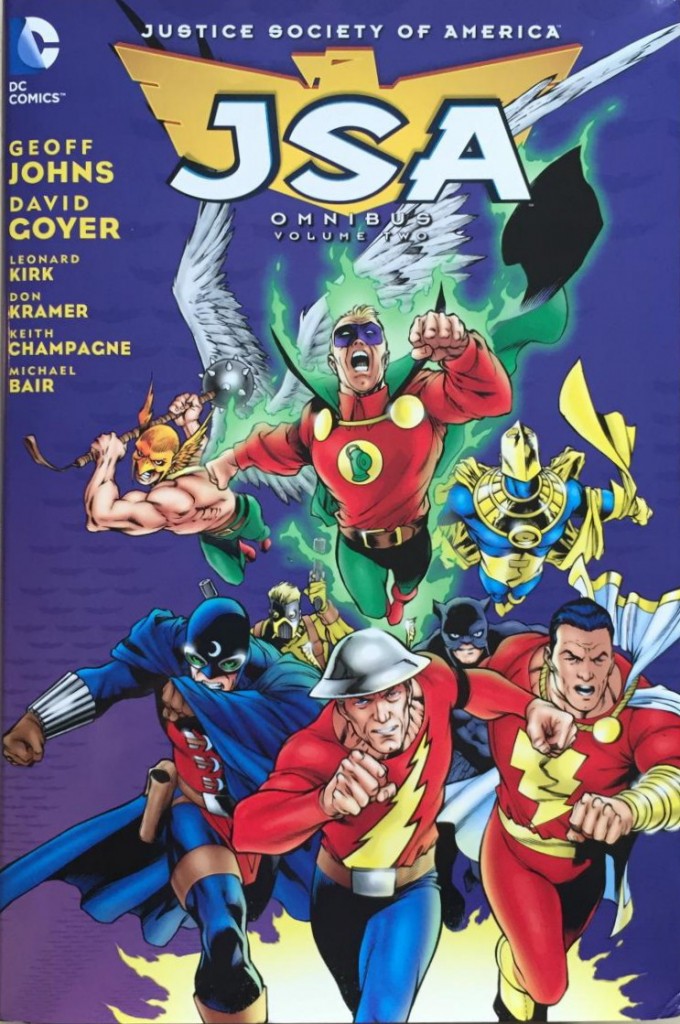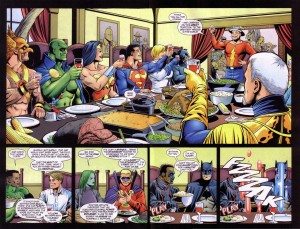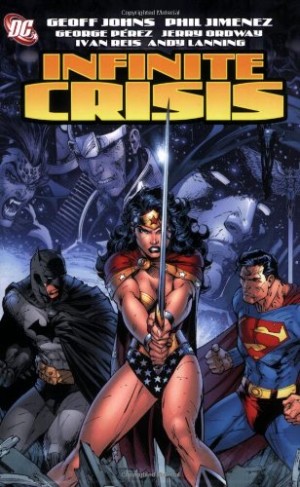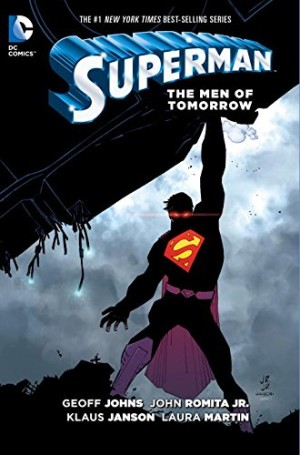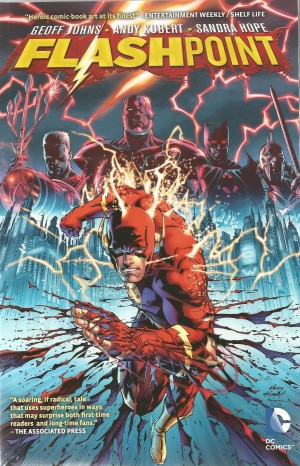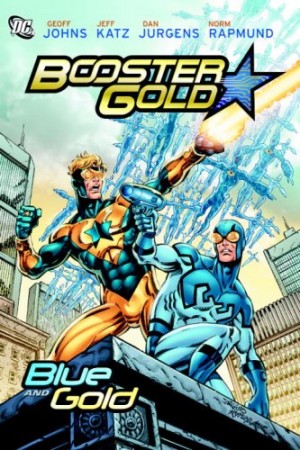Review by Frank Plowright
Volume 1 clocked in at more than 1200 pages. This ups the count by another 200, and the quality considerably by completing the JSA run written by Geoff Johns, first in tandem with David Goyer, then solo. There’s barely a substandard story in the run as effective plotting, frequently surprising guest stars, well-observed characterisation and good superhero art are the order of the day. The primary artists are Stephen Sadowski, Leonard Kirk and Don Kramer, all adept at supplying both the combination of superhero action and the human moments that characterise JSA. When guest artists are used, and Dave Gibbons, Rags Morales, Jerry Ordway and Peter Snejbjerg all put in an impressive shift, they’re equally in tune with the requirements.
The finest sequence here is a desperate battle against the time-travelling dictator Per Degaton. Imperiously portrayed by Kramer as a hovering presence in a black trenchcoat, he first taunts the assorted JSA members about witnessing their deaths, then sets a plan in motion to disrupt the current organisation’s 1951 predecessors. If they disband time will alter, and it’s up to the present-day heroes to persuade their disillusioned counterparts to pick up the baton once again. This requires them travelling to the era, which is particularly restrictive for the African-American Mr Terrific.
Almost as good is a desperate battle in a world re-fashioned by the Ultra-Humanite in which he controls all superheroes bar a few. A rag-tag band must not only evade the ever-patrolling agents of the Ultra-Humanite, but free enough others to withstand the likes of Superman and Firestorm when attempting to set the world right.
A continually effective plotting trait is the manner in which the writers settle on a character, usually associated with JSA in some fashion, and manage to inveigle them into a story whether or not they exist in the same era or even dimension. Throughout the book, there’s maximum use made of the possibilities provided by the DC universe and all it encompasses.
The roster develops as the pages turn, but it’s Black Adam who emerges as the most fascinating character. Formerly the evil counterpart to Captain Marvel, his previous behaviour was credibly explained when he joined the team in the previous volume. He’s an uncompromising and imperious man with an unflinching attitude as to what constitutes justice, unforgiving of anyone who crosses that line, and equally towards those who fall short in his estimation. He takes quite the journey through this book, yet there’s a satisfactory, and surprising, conclusion to Captain Marvel’s longstanding mistrust.
Iconic images and memorable character moments abound, countered by very few sub-par sequences. Despite the JSA’s long and possibly complicated history, everything is laid out, and there’s no reason any reader should be confused by, for instance, three heroes named Hourman existing alongside each other.
Those preferring the paperback collections can also locate the material here as JSA volumes 4-10, individually Fair Play, Stealing Thunder, Savage Times, Princes of Darkness, Black Reign, Lost, and Black Vengeance.
